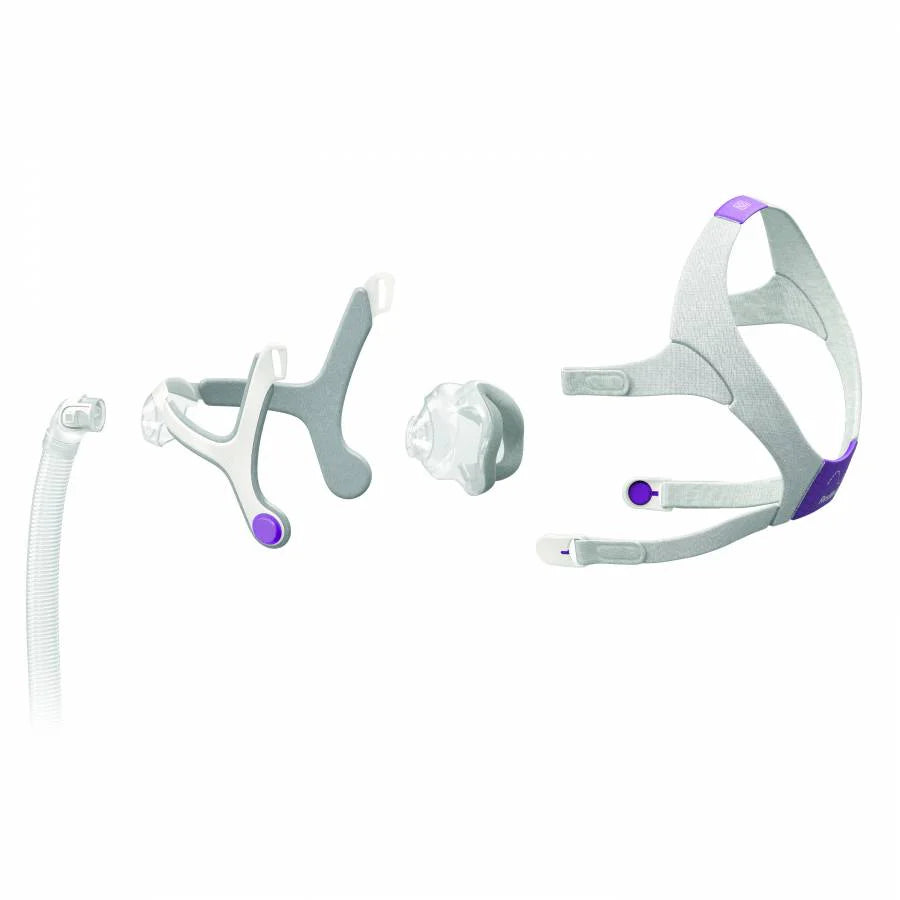Le traitement de l'apnée du sommeil nécessite un ajustement confortable du masque, surtout avec un appareil CPAP. Au Canada, il existe quelques conseils pour améliorer le confort de votre masque CPAP, réduire les fuites et améliorer la qualité générale de votre sommeil. Poursuivez votre lecture pour découvrir des conseils éprouvés et des conseils de spécialistes canadiens du sommeil pour un ajustement parfait de votre masque CPAP.
- Il est important de savoir ce qui constitue un bon ajustement
L'ajustement du masque CPAP est crucial pour l'efficacité du traitement. Chez certains patients, un masque mal ajusté provoque des douleurs et des démangeaisons au visage, et peut exposer la peau à des niveaux élevés et nocifs d'oxygène, réduisant ainsi l'efficacité du traitement. Selon les experts canadiens du sommeil, il est essentiel de s'assurer que l'appareil CPAP fournit la pression adéquate pour traiter efficacement l'apnée du sommeil.
- Choisissez le bon type de masque CPAP
Il existe différents types de masques utilisés en PPC : masque nasal, masque facial et masque narinaire. Chaque type offre des caractéristiques et des avantages différents :
- Masques nasaux : ils sont appelés couvre-nez et doivent être utilisés par ceux qui utilisent leur nez pour respirer.
- Masques intégraux : ils couvrent à la fois le nez et la bouche, ce qui est idéal pour les personnes qui ont tendance à respirer par la bouche ou celles qui ont besoin d'aide.
- Masques nasaux : ils s'insèrent directement dans les narines et ne sont pas très grands, ils conviennent donc aux personnes qui aiment les petits appareils.
Il est donc conseillé de choisir le bon type de masque en fonction de ses habitudes respiratoires et de son niveau de confort.
- Mesurez votre visage et sélectionnez la bonne taille
Toute personne souhaitant acheter ou faire ajuster un masque CPAP doit faire mesurer correctement son visage. Les masques CPAP canadiens sont généralement accompagnés d'un tableau des tailles pour vous aider à choisir la taille appropriée. Les écouteurs doivent être ajustés en fonction des mesures de votre visage, là où vous souhaitez qu'ils soient bien fixés, comme la distance entre l'arête du nez et le menton. La plupart des détaillants canadiens proposent des trousses de taille ou des tailles d'essai pour faciliter le choix de la taille.
- Serrer et desserrer les sangles et le harnais
Le confort ne dépend pas seulement du choix des panneaux ; les sangles et le harnais doivent être ajustés pour que le casque soit parfaitement ajusté. Suivez ces étapes :
- Desserrez les sangles : Tout d’abord, vous pouvez déboucler toutes les sangles pour que le masque ne soit pas trop serré au départ.
- Positionnez le masque : Placez le masque autour de votre cou et ajustez-le correctement, en couvrant votre nez ou votre bouche.
- Serrer progressivement : Commencez par tirer les sangles verticalement du dos vers l'avant, en tirant progressivement du haut vers le bas. Idéalement, il faut s'efforcer de bien serrer le masque afin d'assurer une bonne tenue, sans créer d'inconfort ni de pression.
- Vérification de l'étanchéité : Vérifiez que le masque ajusté épouse parfaitement le visage ; il ne doit y avoir aucun espace entre le bord du masque et le visage. L'ajustement du masque doit être parfait pour éviter toute fuite d'air susceptible de perturber le traitement.
- Test de confort-revenu et test d'ajustement
Une fois le masque ajusté, prenez le temps de le tester pour vérifier son confort : Une fois le masque ajusté, prenez le temps de le tester pour vérifier son confort :
- Allongez-vous : On peut essayer de dormir dans sa position habituelle pour s'assurer que le masque est bien positionné et qu'aucune fuite ne se produit.
- Ajuster si nécessaire : Il faut ajuster au mieux toute gêne. Cela peut se faire en modifiant le positionnement du masque ou en ajustant les sangles, en les serrant ou en les desserrant.
- Surveiller les fuites : Assurez-vous qu'il n'y a pas d'espace entre les contours du masque. Les petites fuites sont très fréquentes et peuvent être facilement réparées en ajustant simplement la tension de la sangle ou en repositionnant le masque.
- Entretien régulier et réévaluation
Un masque CPAP peut nécessiter des ajustements et un entretien périodiques :
- Nettoyer régulièrement : Pour garder votre masque en bon état, vous devez le nettoyer et l'entretenir conformément aux instructions du fabricant.
- Remplacez les pièces si nécessaire : Le coussinet ou toute autre pièce peut éventuellement se dégrader. Remplacez ces pièces selon les recommandations de votre médecin ou du fabricant des masques.
- Réévaluer l’ajustement : soyez attentif aux changements de confort ou aux changements dans vos besoins thérapeutiques, modifiez le positionnement du masque pour améliorer l’ajustement ou consultez un spécialiste du sommeil en cas de problème.
Conclusion
Au Canada, l'ajustement des masques CPAP est essentiel pour utiliser un appareil contre l'apnée du sommeil et optimiser son confort. Si vous connaissez le concept d'ajustement, le choix du bon type de masque, la bonne mesure, le bon réglage des sangles et l'utilisation et l'entretien appropriés contribueront à un meilleur traitement. En suivant tous les conseils décrits ici et en consultant des spécialistes du sommeil au Canada, vous optimiserez votre expérience d'utilisation du CPAP.

